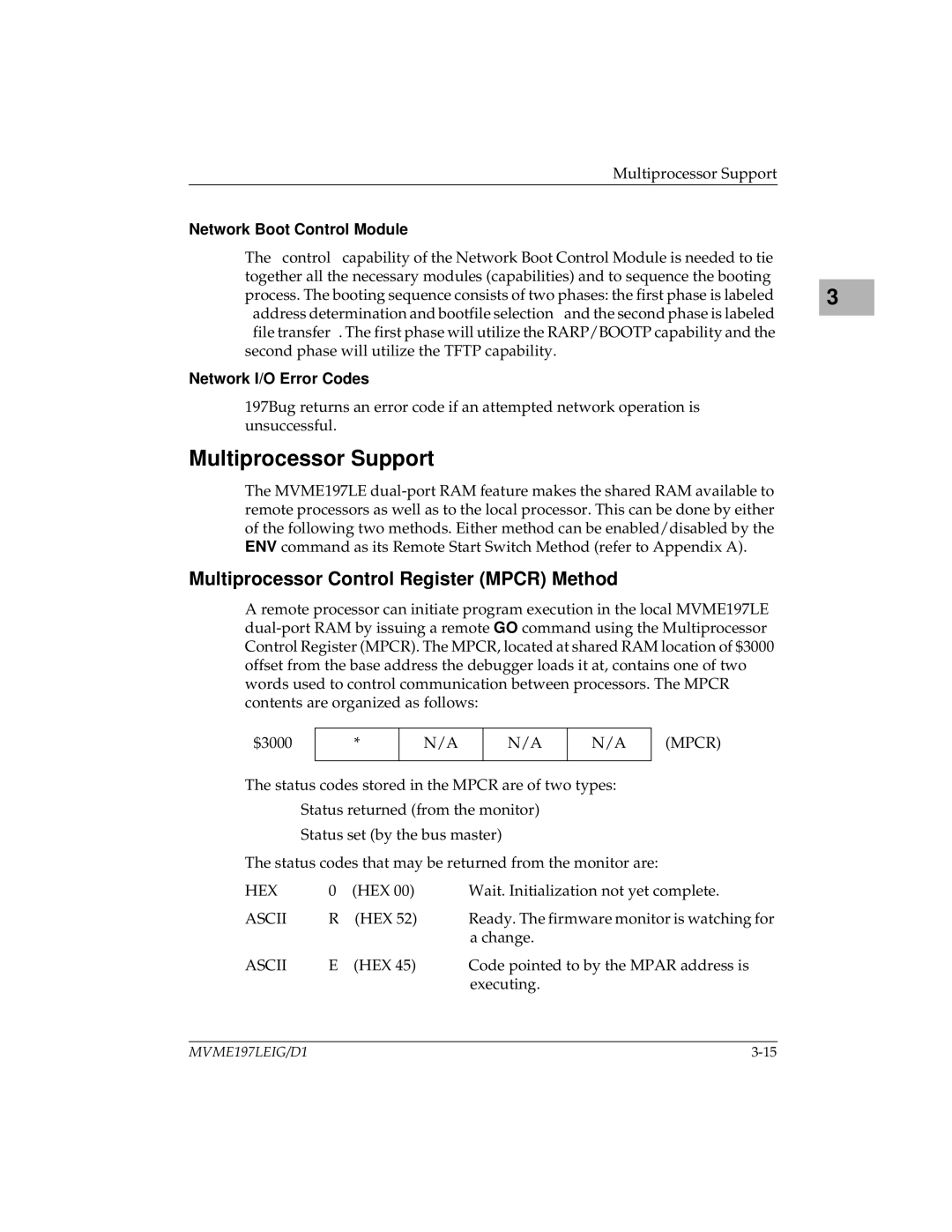
Multiprocessor Support
Network Boot Control Module
The “control” capability of the Network Boot Control Module is needed to tie together all the necessary modules (capabilities) and to sequence the booting process. The booting sequence consists of two phases: the first phase is labeled “address determination and bootfile selection” and the second phase is labeled “file transfer”. The first phase will utilize the RARP/BOOTP capability and the second phase will utilize the TFTP capability.
Network I/O Error Codes
3 |
197Bug returns an error code if an attempted network operation is unsuccessful.
Multiprocessor Support
The MVME197LE
Multiprocessor Control Register (MPCR) Method
A remote processor can initiate program execution in the local MVME197LE
$3000
*
N/A
N/A
N/A
(MPCR)
The status codes stored in the MPCR are of two types:
–Status returned (from the monitor)
–Status set (by the bus master)
The status codes that may be returned from the monitor are:
HEX | 0 | (HEX 00) | Wait. Initialization not yet complete. |
ASCII | R | (HEX 52) | Ready. The firmware monitor is watching for |
|
|
| a change. |
ASCII | E | (HEX 45) | Code pointed to by the MPAR address is |
|
|
| executing. |
MVME197LEIG/D1 |
